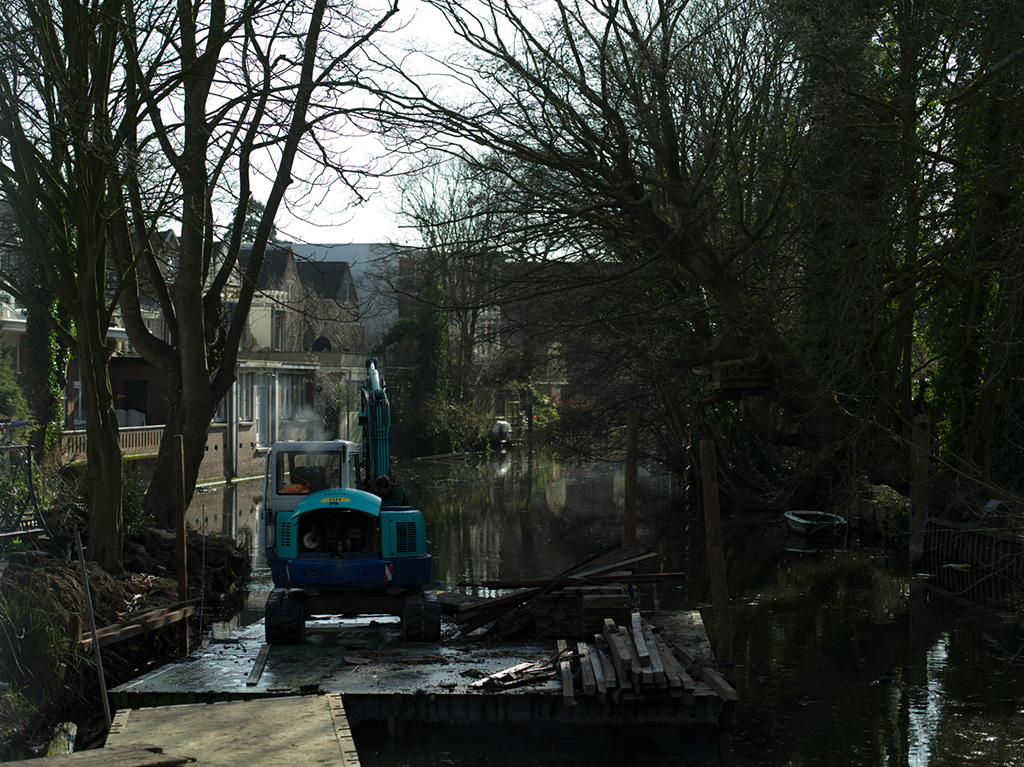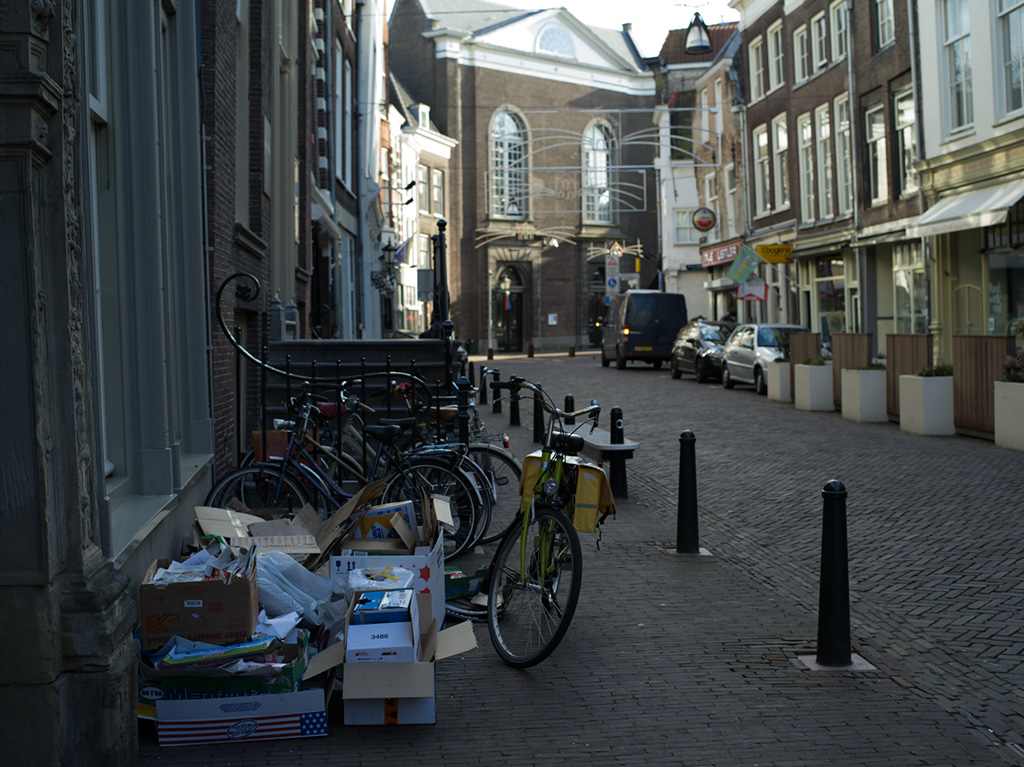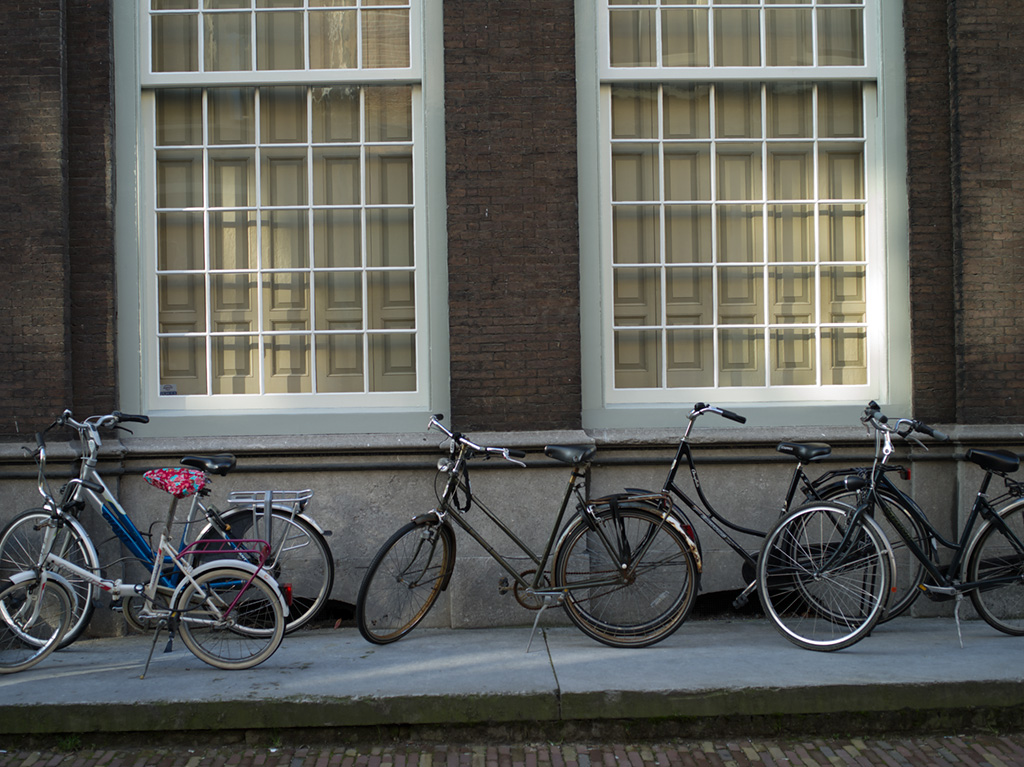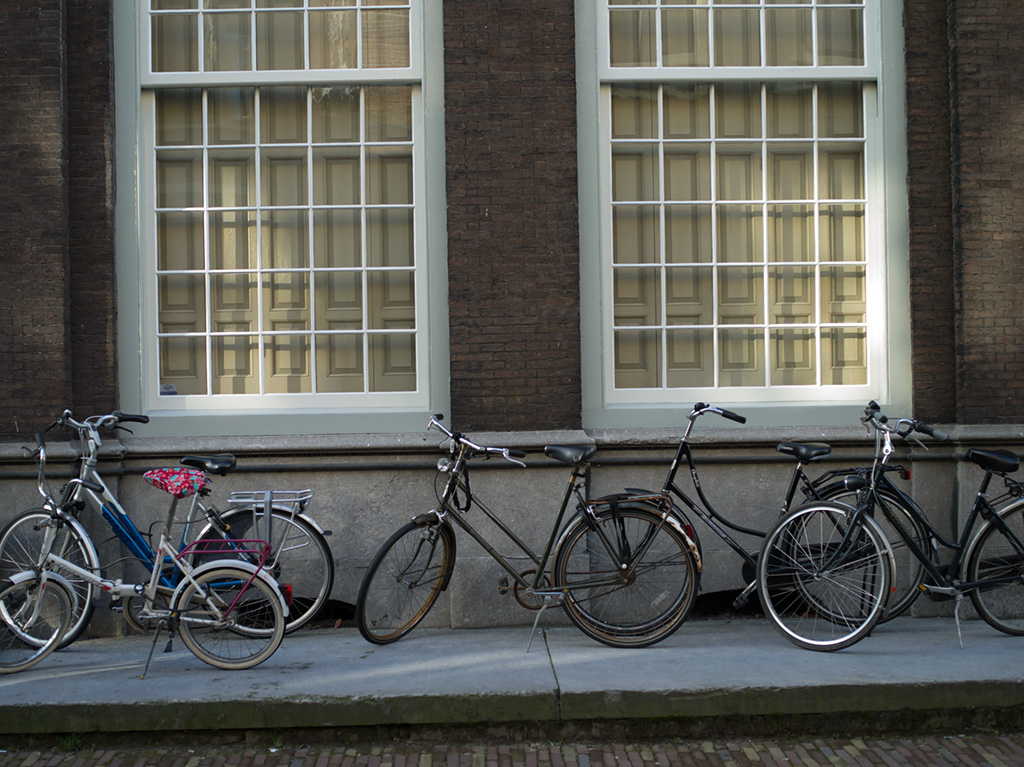The past nine years I have been shooting with Canon gear. Starting with a 350D, then two of them, building a business, until shooting weddings with a pair of 5D’s (the then current model) in 2008. After that, I decided I wanted to take a different turn and got rid of most of my gear, leaving just one 1Ds II (bought second hand) and four lenses. Over the following years I grew very accustomed to the 1Ds II and its quirks, trying to get the best possible image quality from it. Last monday I sold it.
Today was my first day out and about with my new camera: the Pentax 645D. I wanted to concentrate on handling the machine and experimenting with ISO 100 and 200 (100 is part of the “extended” range).
Initial findings:
1) The 645D is a joy to work with, after a slight (inevitable) learning curve (I read the manual before going to sleep yesterday). Buttons are very well placed, the whole interface makes sense.
2) The mirror up switch is a godsend (goodbye fiddling with the menu).
3) Manual focusing with the Pentax is not harder than with the Canon. At first I thought it was easier, but because it is more critical, even at f/4 and f/5.6 (hello big sensor), I had about the same amount of keepers due to focus as I would have had with the 1Ds II.
4) There’s obvious chromatic aberration, both with the 55 and the 90 mm, in high contrast areas. This was a slight dissapointment.
5) The 55 has some very noticeable barrel distortion which I hoped it hadn’t.
6) ISO 100 seems more like 125 or 160 and / or has less headroom / dynamic range. This needs to be investigated further but for now I think ISO 200 will do fine.
7) ISO can be changed without taking your eye from the viewfinder, like I was used to with the 5D’s. Really happy with that, this is a must for fast paced environments like weddings.
Sharpness and image quality will be judged with large high quality prints, which I don’t have yet. So I will refrain from going into that, but on the screen it looks very promising.
I made some changes to the default setup of the 645D:
1) Moved AF from half-press of the shutter button to only the AF button on the back. Since I mostly MF and the 55 and 90 are FTM I can now MF without the focus changing when I press the shutter and still AF with one push of a button.
2) Turned the level indicator in the viewfinder on, this moves the under / overexposure indicator to the right where normally the ISO is. The ISO can still be changed (and seen in the viewfinder) when pushing the ISO button.
3) Expanded ISO on (pending investigation).
4) All noise reduction off (pending investigation).
5) Auto image rotation off, I can rotate the camera myself, thank you. (It still saves the orientation of the image to be picked up by ACR.)
Here’s some shots from the day (unedited, except the last one is a slight crop). Note the fringing in the first one (this is the 90 mm), and the barrel distortion in the last (55 mm).




Sounds like you’ve picked an excellent machine! Enjoy!
Thanks for suggesting it. 🙂
Leuk om te lezen mijnheer, ik moet zeggen dat ik uw camera wissel met argusogen bekeken heb. Pentax ken ik amper. Maar de keus voor middenformaat / grootbeeld snap ik in uw geval uitstekend. Wel vraag ik mij af wat het downscalen van de megapixel overkill doet in output voor lagere resoluties. Maar ik weet dat u altijd verscherpt op de uiteindelijke versies.
Gaat u nog een review doen? Zelf ben ik wel benieuwd naar 100% crops van beide camera’s de oude canon en het nieuwe werkpaard 😉
De beter te bedienen toetsen voor essentiele functies vind ik een bijzonder nuttig.
Wat is de native ISO van de camera. Dit is dan de 200 ASA lijkt mij? (meeste dynamic range).
Als ik het goed lees vallen de objectieven u dus tegen, of had u te hooggespannen verwachtingen?
Heer! Ik zal nog minstends twee blogberichten plaatsen waar ik ook dieper inga op de Pentax. De suggestie van 100% crops van beide camera’s is wel een goede, die neem ik over.
Het downscalen heeft eigenlijk geen andere effecten dan met de Canon al het geval was. Scherptediepte en helderheids- en kleurovergangen zijn grotendeels een functie van het formaat dat de afbeelding krijgt op je netvlies. Dit blijft eigenlijk gelijk voor de minuscule internet plaatjes, ongeacht van welke sensor het komt. Alleen in dynamic range zou je wat kunnen zien uiteraard (en ik verbeeld mij dat ook te zien). De Pentax heeft wel duidelijk potentie bij grotere afbeeldingen (zeg 1 meter breed) die hem boven de Canon uit zullen doen stijgen, vermoed ik.
Native ISO schijnt 200 te zijn inderdaad, maar dit staat niet echt ergens vermeld (of ik heb eroverheen gelezen). Dezelfde sensor heeft in andere camera’s een native ISO van 50 (en gemeten hogere dynamic range, voor zover ik het heb kunnen vinden op internet), er zit dus een hoop in de elektronica buiten de pure sensor die de gevoeligheid en dynamic range beïnvloedt.
Ik had hooggespannen verwachtingen, met name betreffende de 90 mm. Hier was online weinig over te vinden maar de prijs is dermate astronomisch dat ik de gok waagde. Van de Canon 100 mm USM macro ben ik gewend dat deze zeer weinig chromatische aberratie heeft, ik had verwacht dat de Pentax 90 mm daar nog minder last van zou hebben.